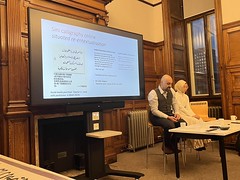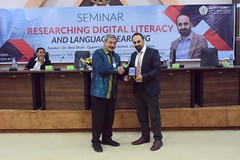
Source: http://www.everystockphoto.com/photo.php?imageId=4082828&searchId=0e78b8c364851afeb40b607ed711097d&npos=74
(CC BY 2.5)
I have recently submitted a paper for a journal, which will be coming out very shortly as part of a ‘digital literacies’ series. The paper is co-written by Roberto de Roock, a fellow PhD researcher at the University of Arizona. It’s been a pleasure working with Roberto over the last few months on this, as we have discussed our paper and reflected on how our respective PhD methodologies constitute a valuable contribution to the fields of literacy studies, digital methods, and multi-modal interaction.
Before I post the paper itself, and outline its contents, I’d like to share how I got to work with Roberto as I have never actually met him in person. We discussed the idea of writing reflections on our chosen methods over an email list, followed by Skype calls, and subsequent collaborative writing using Google Drive. We also found the integrated comment system a useful way to weigh up arguments about a specific aspect or part of the text without modifying it immediately–a crucial part of long-term collaborative editing.
I also set up a Google Community to discuss theoretical perspectives and readings with people like Ailsa Haxell and Chris Bigum, among others, and would also pop in to the actor-network theory Facebook group (moderated by Jeffrey Keefer) to chat and read what other researchers were discussing. Also, using Google Hangout we read, discussed, and ‘unpacked’ papers by John Law, Karen Barad, Bruno Latour, among others. I have also never met in person most of the people in these forums and networks.
Nielsen (2008) refers to these unique kinds of networks as Personal Learning Networks (PLNs) which can consist of “people and resources that guide your learning, point you to learning opportunities, answer your questions, and give you the benefit of their own knowledge and experience”. The kinds of spaces that lead to creative works, innovation, and good ideas are usually arenas where hunches collide (see this brief lecture by Steven Johnson), whether it’s the coffee house, Facebook group, or seminar. Whilst I have never been a fan of the ‘n’ word (=networking), and sometimes joke about how it can be a euphemism for conference schmoozing, I would recommend careful and considered network building for collaborative work and mentoring. Nielsen’s words are apt here: “Even though I had not formally defined these people as my mentors, I realized that at any given moment they were with me in my daily life as my advisory committee who guides my actions, reactions, decisions and writing.”
Zhu and Procter (2012) further discuss the implications of this type of scholarly communication practice, collaborative authoring, and pathways to ‘open science‘ more generally. Social media and collaborative writing tools are doubtless useful at every stage of the research workflow (more on that here), but I would recommend using tools like Google Drive with some care and consideration. Firstly, there is the issue of revision history which needs to be monitored so that modifications are clearly labelled, if you are collaborating in this particular manner. Otherwise, you could each write a section, but may still need to combine insights in the Discussion and Conclusion sections. Revision history is also important in ascertaining who wrote what, perhaps even colour coding contributions, especially helpful if your work contributes to a bigger project such as your thesis.
Since beginning this paper, Roberto and I have now teamed up with another researcher based in Japan for our next publication (most likely a book chapter), as we continue to expand our ‘personal learning network’ in the way that Nielsen describes.
I will post the paper when it is out…
Categories: PhD Reflections, Technologies











Well done on the paper Ibrar. I look forward to reading it once it’s out.
Thanks Cormac. I’ll definitely send it to you and I’m sure you’ll be interested in its contents as it discusses some common interests of ours.
Ibrar